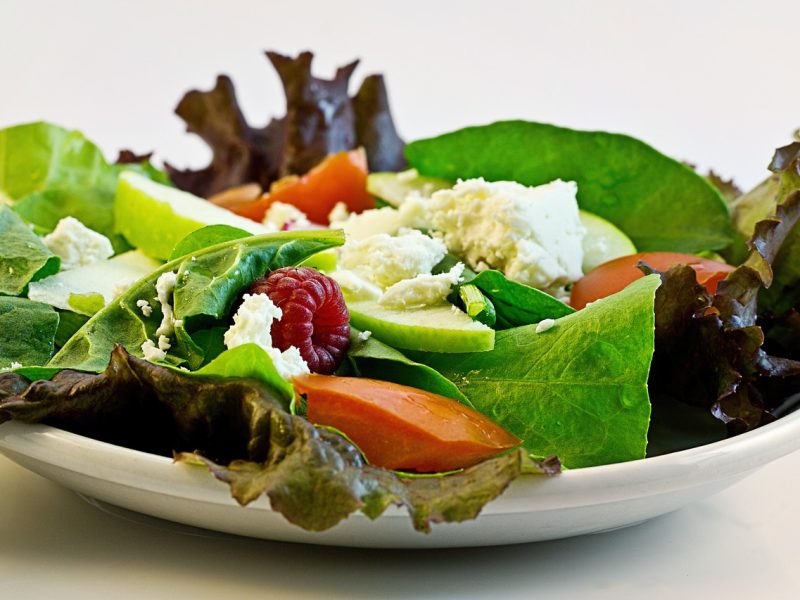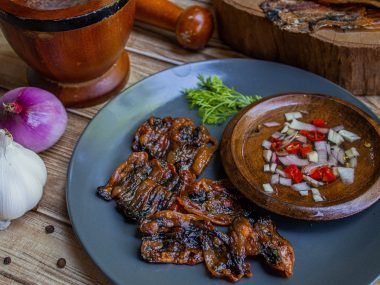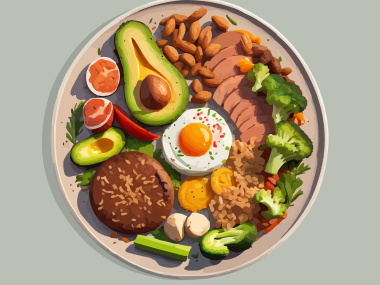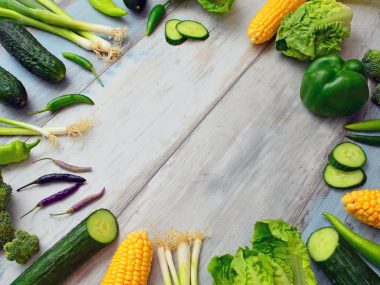In the journey towards shedding those extra pounds, one of the most crucial elements is crafting a balanced meal plan for weight loss. It’s not just about cutting out certain foods; it’s about nourishing your body with the right nutrients while maintaining a calorie deficit.
With dedication and strategic planning, you can achieve your weight loss goals effectively and safely.
Let’s delve into the art of creating a balanced meal plan tailored for weight loss success.
Understanding the Basics:
Before diving into meal planning, it’s essential to understand the basics of weight loss. It boils down to the simple equation of calories in versus calories out.
To lose weight, you need to consume fewer calories than your body burns. However, it’s not just about slashing calories; the quality of those calories matters significantly.
Nutrient-dense foods will not only support your weight loss journey but also ensure your overall health and well-being.
1. Assess Your Current Eating Habits:
Start by taking a closer look at your current eating habits. Identify any unhealthy patterns or areas where you can make improvements. Keep a food journal for a few days to track what you eat and drink. This will provide valuable insight into your calorie intake and nutritional choices.
2. Set Realistic Goals:
Set achievable goals that align with your weight loss aspirations. Aim for steady, sustainable progress rather than quick fixes. Remember, it’s not just about reaching a certain number on the scale; it’s about adopting a healthy lifestyle that you can maintain long-term.
3. Plan Your Meals:
Meal planning is your secret weapon for success. Sit down and plan your meals for the week ahead. Aim for a balance of lean proteins, whole grains, fruits, vegetables, and healthy fats. Plan for three main meals and two to three snacks per day to keep hunger at bay and prevent overeating.
4. Opt for Nutrient-Dense Foods:
Fill your plate with nutrient-dense foods that provide essential vitamins, minerals, and antioxidants. Choose lean proteins like chicken, fish, tofu, and legumes. Incorporate whole grains such as quinoa, brown rice, and oats. Load up on colorful fruits and vegetables to boost your fiber intake and keep you feeling full and satisfied.
5. Watch Your Portions:
Portion control is key when it comes to weight loss. Be mindful of serving sizes and avoid oversized portions, especially when dining out or snacking. Use smaller plates and utensils to help control portion sizes and prevent overeating.
6. Stay Hydrated:
Don’t forget to hydrate! Drinking an adequate amount of water is essential for overall health and can support weight loss efforts. Aim for at least eight glasses of water per day, and hydrate even more if you’re physically active or live in a hot climate.
7. Incorporate Regular Exercise:
While nutrition plays a significant role in weight loss, incorporating regular exercise can enhance your results and improve your overall health. Aim for a combination of cardio, strength training, and flexibility exercises to maximise calorie burn and build lean muscle mass.
8. Make Lifestyle Changes:
In addition to diet and exercise, consider making lifestyle changes that support your weight loss goals. Get plenty of sleep each night, manage stress levels, and prioritise self-care. Surround yourself with a supportive network of friends and family who encourage and motivate you along the way.
Sample Meal Plan:
Here’s a sample meal plan to kickstart your weight loss journey:
- Breakfast: Spinach and feta omelette with whole grain toast
- Snack: Greek yoghurt with berries
- Lunch: Grilled chicken salad with mixed greens, tomatoes, cucumbers, and balsamic vinaigrette
- Snack: Sliced apples with almond butter
- Dinner: Baked salmon with quinoa and roasted vegetables
To further break it down, an effective Meal Plan for weight loss
Breakfast: Spinach and Feta Omelet with Whole Grain Toast
- Spinach and Feta Omelet:
- Heat a non-stick skillet over medium heat and coat with cooking spray or a small amount of olive oil.
- Whisk together 2 eggs and a handful of fresh spinach in a bowl. Season with salt and pepper, to taste.
- Pour the egg mixture into the skillet and cook until the edges begin to set.
- Sprinkle crumbled feta cheese over one half of the omelette, and fold the other half over the filling.
- Cook for another minute, or until the cheese melts and the omelette is cooked through.
- Whole Grain Toast:
- Toast a slice of whole grain bread until golden brown.
- Serve alongside the spinach and feta omelette.
Snack: Greek Yogurt with Berries
- Greek Yoghurt:
- Choose plain, low-fat Greek yoghurt for a protein-rich snack.
- Top with a handful of fresh berries, such as strawberries, blueberries, or raspberries.
- For added sweetness, drizzle with a teaspoon of honey or sprinkle with cinnamon.
Lunch: Grilled Chicken Salad with Mixed Greens, Tomatoes, Cucumbers, and Balsamic Vinaigrette
- Grilled Chicken:
- Marinate a chicken breast in a mixture of olive oil, lemon juice, garlic, and herbs such as oregano or thyme.
- Grill the chicken until cooked through and charred on the outside.
- Slice the grilled chicken breast and set aside.
- Mixed Greens Salad:
- Toss together a variety of fresh salad greens such as spinach, arugula, and romaine lettuce.
- Add sliced tomatoes, cucumbers, and any other vegetables of your choice.
- Top with the sliced grilled chicken breast.
- Balsamic Vinaigrette:
- Whisk together balsamic vinegar, olive oil, Dijon mustard, minced garlic, salt, and pepper to taste.
- Drizzle the balsamic vinaigrette over the salad just before serving.
Snack: Sliced Apples with Almond Butter
- Sliced Apples:
- Wash and slice a crisp apple, such as Gala or Fuji, into wedges.
- Arrange the apple slices on a plate.
- Almond Butter:
- Spread a tablespoon of almond butter onto the apple slices.
- For added crunch, sprinkle with a few chopped almonds or granola.
Dinner: Baked Salmon with Quinoa and Roasted Vegetables
- Baked Salmon:
- Preheat the oven to 375°F (190°C).
- Place a salmon fillet on a parchment-lined baking sheet.
- Season the salmon with olive oil, lemon juice, garlic, and your favourite herbs and spices.
- Bake for 12-15 minutes or until the salmon is cooked through and flakes easily with a fork.
- Quinoa:
- Rinse 1/2 cup of quinoa in cold water.
- Combine the quinoa with 1 cup of water or low-sodium chicken broth in a saucepan.
- Bring to a boil, then reduce the heat to low and simmer for 15-20 minutes or until the quinoa is tender and the liquid is absorbed.
- Roasted Vegetables:
- Toss your choice of vegetables such as broccoli, bell peppers, and carrots with olive oil, salt, and pepper.
- Spread the vegetables in a single layer on a baking sheet.
- Roast in the oven at 400°F (200°C) for 20-25 minutes, or until tender and caramelised.
This detailed meal plan provides a balance of protein, healthy fats, complex carbohydrates, fibre, vitamins, and minerals to support your weight loss goals while keeping you satisfied and energised throughout the day.
Feel free to adjust portion sizes and ingredients based on your personal preferences and nutritional needs.
Conclusion
Creating a balanced meal plan for weight loss is not about deprivation or extreme measures. It’s about nourishing your body with wholesome foods that support your health and fitness goals.
By following these tips and crafting a personalised meal plan, you can achieve sustainable weight loss success while feeling energised and satisfied along the way.
Remember, consistency and patience are key, and celebrate your progress every step of the way!






